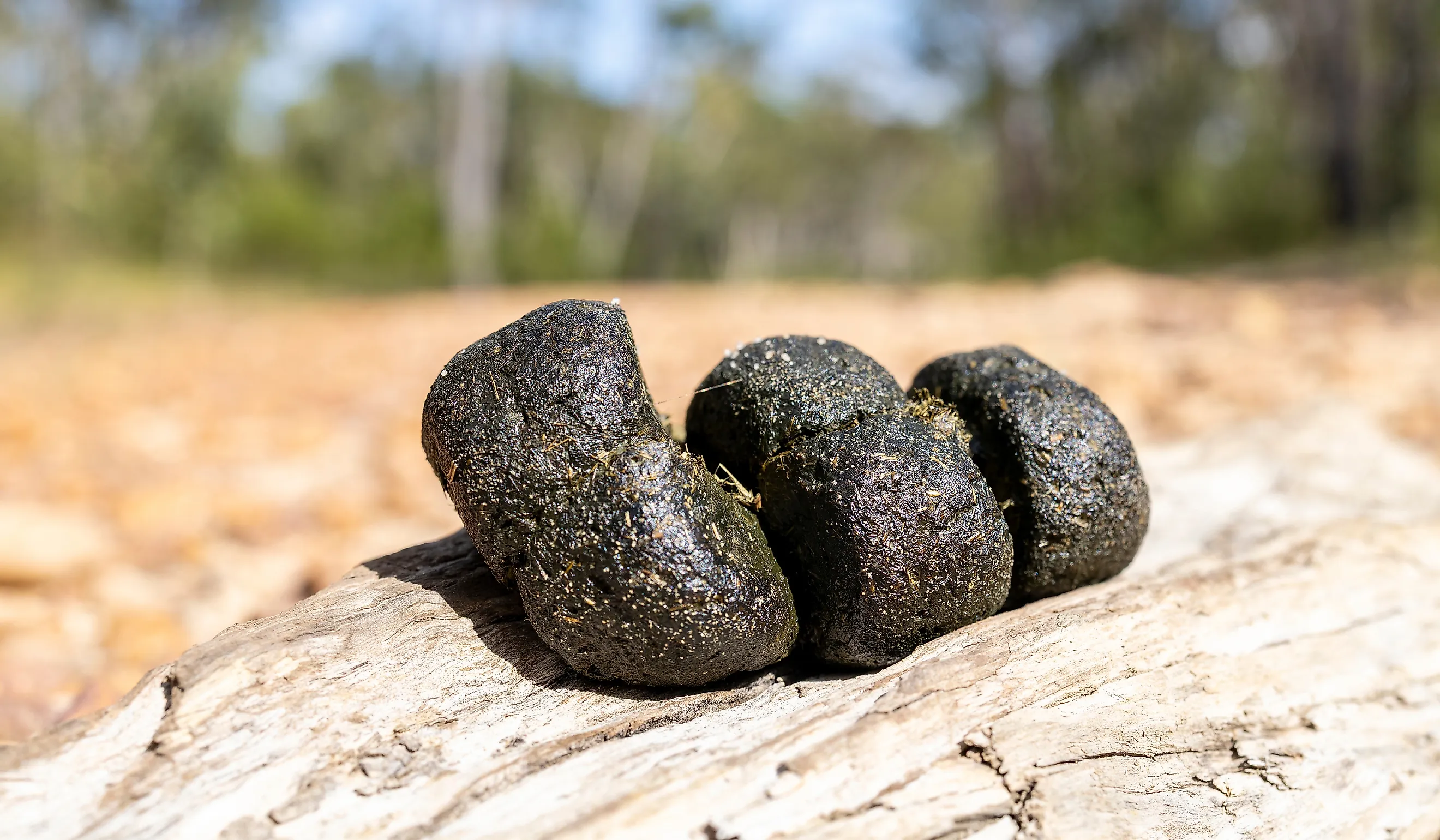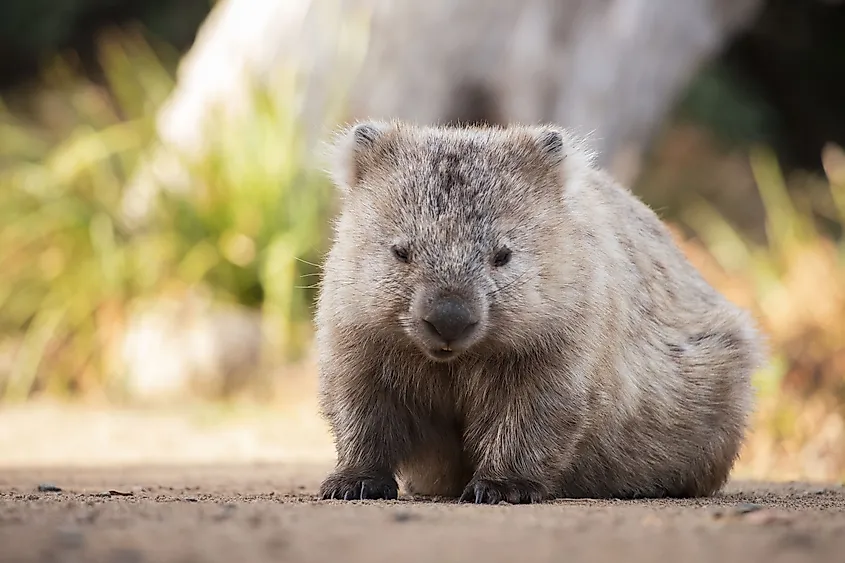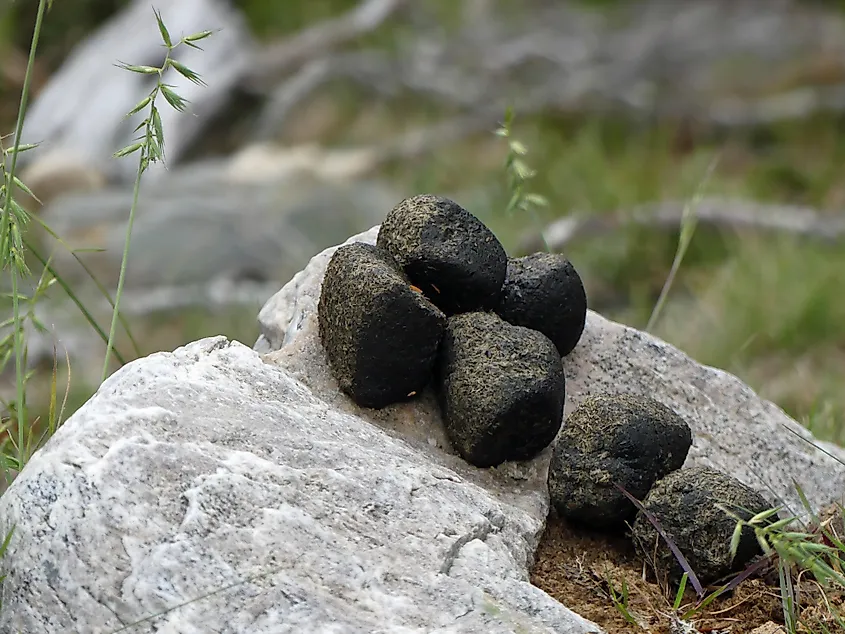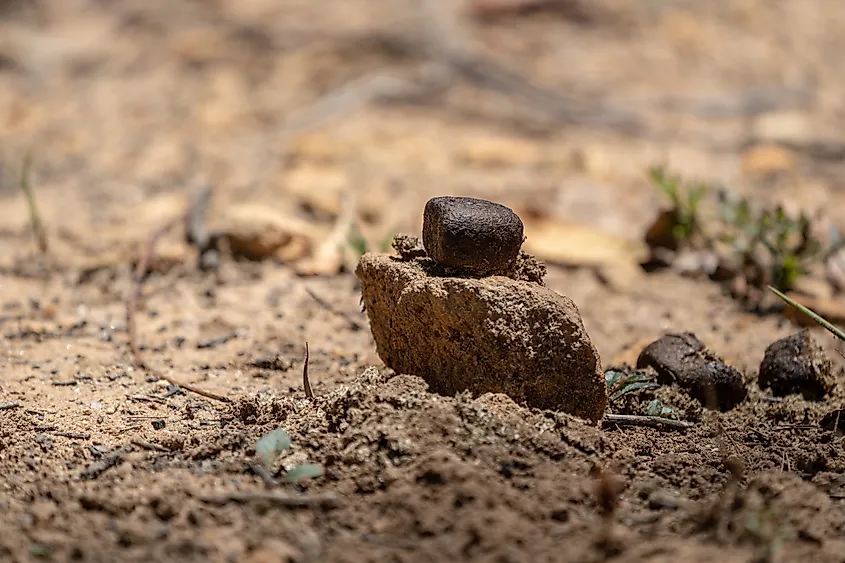
How Wombats Excrete Perfect Little Cubes
Everybody poops, but only the bare-nosed wombat (Vombatus ursinus), aka the common wombat, does so in cube form. That's right, this Australian marsupial excretes six-sided dung, and better yet, stacks its anomalous creations in prominent places as a signal to the wider wombat world. How exactly this furry fellow from Down Under manages to squeeze square dung through a round hole was a long-standing mystery to biologists. But a combination of humane dissections and mathematical modeling has finally revealed the answer. So let's nix the taboo and wade into the weird world of wombat poo.
A Bit About The Wombat

Bare-nosed wombats live in southern and southeastern Australia, including the small offshore state of Tasmania. They are known to roam a variety of habitats, including grassy plains, hilly eucalyptus forests (alongside their koala cousins), and sub-alpine mountainous regions. These nocturnal marsupials (i.e., a type of mammal that gives birth to underdeveloped young and nurtures them in an external abdominal pouch) are also herbivorous - grazing on plants (primarily grasses, but also sedges, rushes, roots, and tubers) by night, and holing up in subterranean tunnels by day. Well-fed wombats can grow upwards of 35-40 kilograms (77-88 pounds), with males being slightly larger than the females. Finally (and this will become an important factor in our decidedly icky tale), bare-nosed wombats are territorial.

Getting A Square Poop Through a Round Hole

If you're anything like me, this article's query may have immediately summoned visions of a rectangular intestinal tract terminating in a comically square sphincter. Not so. The bare-nosed wombat does indeed have a round anus like the rest of us. So, how does it produce perfect little cubes? Well, its specialized gut operates in a few distinct fashions.
Dissections done at the University of Tasmania (breathe easy, my fellow animal activists, these were roadkill specimens), combined with mathematical modelings from the Georgia Institute of Technology (published in the delightfully pertinent scientific journal, Soft Matter), revealed that common wombats undergo extended, non-uniform digestion. The wombat's intestinal tract measures roughly 33 feet (i.e., ten times its body length) and, crudely speaking, contains two stiffer segments and two segments with elastic grooves. Over the span of several days, this non-uniform gut produces some 40,000 wavelike contractions. Such an extensive digestive process helps to not only extract valuable nutrients, but also a greater volume of water. By the last quarter of the tract, fecal matter has dried and solidified, and in the final 8% of the intestine, the characteristic two-centimeter (0.8-inch) cubes are refined.

As a reference, it takes about one to two days for humans and many other mammals to go from mouth to out (so to speak). During that time, peristalsis tends to be consistent in all directions, and the end result is a more hydrated bowel movement.
Why? Just…Why?

Ok, so we've covered the what and how of wombat scat, but that still leaves the most tantalizing question of all: Why on earth would natural selection favor fecal right angles for just this one species? Well, remember how I said that bare-nosed wombats are territorial? It turns out that the copious amount of nightly cube poops acts an important signal to other wombats.
Common wombats commonly produce four to eight compartmentalized excretions at a time - amounting to upwards of 100 square scats per night. This repetitive deed is simply step one. Step two involves stacking said cubes in prominent places throughout their territory, such as on top of rocks and logs - the higher the better!. Without those preternaturally flat sides, the poop would simply roll off, and the signal would be lost. But since the wombat's gut has honed the ability to make dry, stable droppings, these minor monuments stay in place, letting rival wombats know that the area is spoken for, and likewise, potential mates know where to prowl.
Solving the wombat cube-poop mystery is unlikely to impact the world in a significant manner. However, it may help researchers to better monitor captive wombats - as we now know that the squarer the poop, the healthier the wombat. If nothing else, this anomalous poop news is yet another standout story from the animal kingdom. I can already picture David Attenborough narrating a scene in which a cuddly wombat proudly stacks his perfect little poop cube atop a prominent rock. I hope you enjoyed this bathroom reading.











